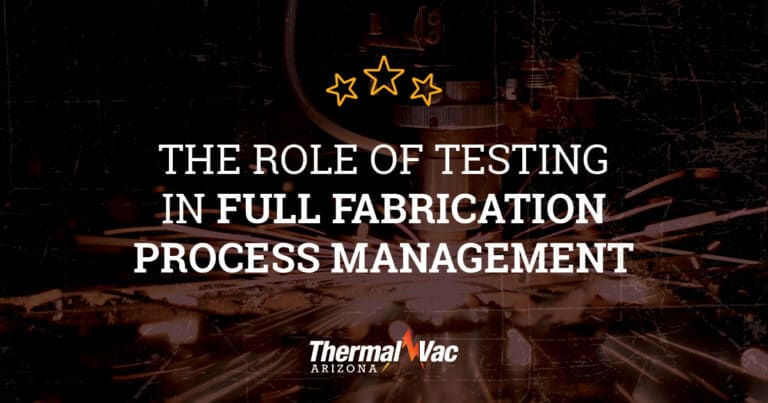Over the last few decades, quality control technologies have undergone a revolution of innovation. Computer-assisted scanning and modeling technologies allow technicians to see, in real time, a level of detail and accuracy that was unthinkable even 20 years ago.
Despite the tech, quality control is still a bugaboo for plenty of manufacturers. A widely distributed process chain is one reason. Each stop along the fabrication path needs the right quality control process in place to ensure not only that its role is done well, but also that its work dovetails seamlessly with what came before and what will come after.
At Thermal-Vac Arizona, our approach to testing draws on our company’s legacy of lessons learned working with components bound for the most demanding places imaginable: outer space and inside the human body. Here’s what that means.
Build quality control into the process plan
The intended use for a component determines its quality control requirements throughout the fabrication process. The plating on the nib of ball-point pens above all needs to be uniform and clean. The brazed joint in the wing of an airplane above all needs to be strong and reliable under extreme temperature, pressure, and acceleration.
To optimize quality control throughout the full fabrication process, Thermal-Vac Arizona calls upon our team of expert engineers to examine the details of each step in a component’s journey. We study each supplier’s procedures and offer specific adjustments in anticipation of downstream steps. Among other things, this includes:
- Anticipating and remediating potential contaminants that could impact joining and finishing work.
- Verifying components are properly packed for the transportation that will be used.
- Ensuring the handling procedures at each stop are adequate to protect components from damage, both inside and out.
Take full advantage of modern testing technologies
Every step in the fabrication process, whether fully automated or manual, needs to be tested for imperfections that could render a component unfit for purpose.
Technology in the hands of properly trained and experienced technicians makes all the difference in testing. Thermal-Vac has been obsessed for decades with finding the best solutions to verify the outcomes of our work. We expect all the suppliers in our customers’ fabrication process to share in our urgency.
High-definition imaging, computerized hardness testing, radiographic inspections, and helium leak testing are a few of the techniques we use to explore every square inch of components that make their way through our shop. These tools reveal details the naked eye would never see.
The human element
That doesn’t mean the expertise of the technician isn’t important. On the contrary, an experienced professional knows the subtle ways to work with parts to produce consistent, reliable outcomes.
The full fabrication process management plan therefore also needs to account for the expertise at each stop in the production path. A project may require the supplemental involvement of an outside expert—for example, a brazing engineer to oversee machining. Do whatever it takes to meet requirements.
Capture the testing dividend
The goal of testing throughout the fabrication process is to catch errors early so they can be corrected without incurring avoidable costs and schedule overruns. In short, robust testing is in everyone’s interest.
Would your business benefit from better quality control processes? Give Thermal-Vac Arizona a call (714) 997-2601 or send us an email to get started.
